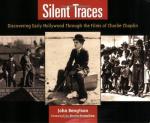|
This section contains 319 words (approx. 2 pages at 300 words per page) |
Charlie Chaplin
In 1910 Chaplin took his first trip to the United States from his home in London, with Fred Karno's Speechless Comedians. He was so dazzled by the city life that he decided to stay in America. During 1913, Charlie joined Keystone Studios in New York City, with whom he stared in his first motion picture, Making a Living.
Charlie spent most of his childhood in orphanages and poorhouses. The poverty he experienced during these years was the inspiration behind his trademark character, The Tramp. His costume consisted of `baggy pants, enormous shoes, and a bowler hat and carrying a bamboo cane.' Chaplin played this classic role in over 70 silent films during his career.
Charlie combined aspects of the circus clown and the mime, with acrobatic elegance, expressive gestures and grace, impeccable timing of gestures and facial expressions to perfect his portrayal of the Tramp.
By his third year in the movie business (1916) Charlie was making $10,000 a week, making him the highest paid actor, possible person, in the world at the time. In 1918 he signed a $1,000,000 contract with Nation Films, with whom, he was in A Dog's Life, The Kid, and Shoulder Arms. By the end of 1918 Chaplin had his own studio in Hollywood.
Chaplin left National Films in 1923, and he and three other entertainers founded the United Artists Corporation. During this time Chaplin also produced, directed, and starred in The Pilgrim, A Woman in Paris, The Circus, and The Gold Rush. Chaplin also composed background music for most of his films.
Charlie Chaplin had a great impact on the twentieth century and movies in general. From his production of films, to his writing and acting, to his directing, Charlie changed peoples' idea of a motion picture.
|
This section contains 319 words (approx. 2 pages at 300 words per page) |


